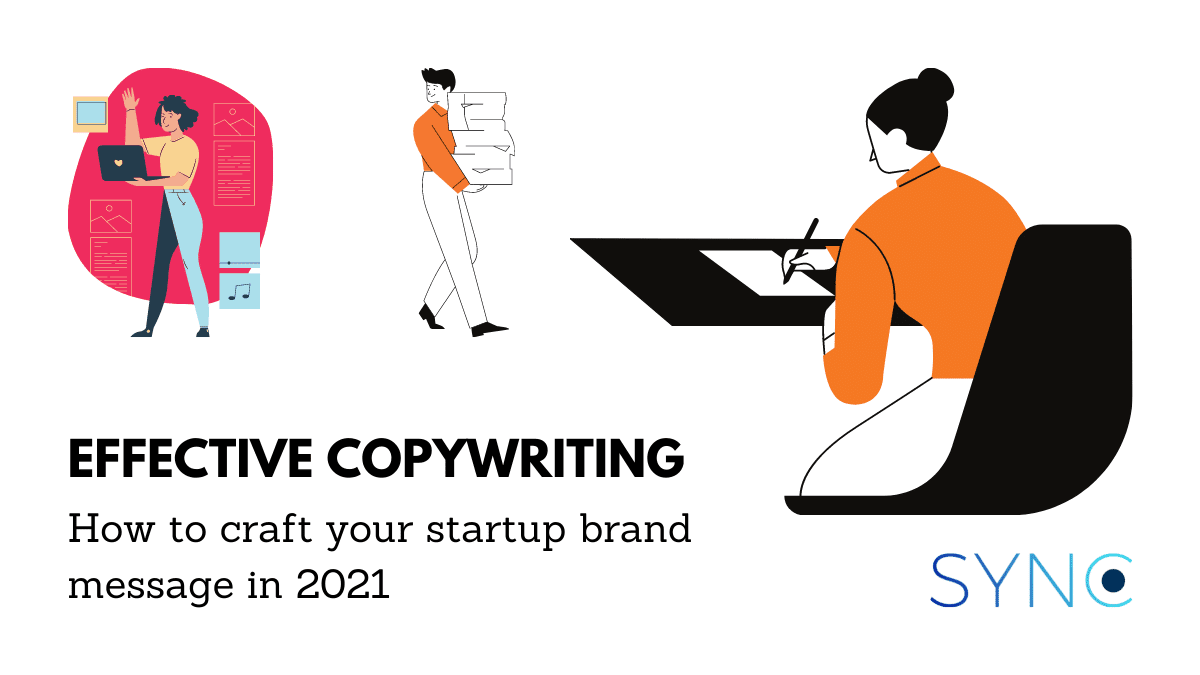Copywriting is an art and a science, and good copywriters are heavily sought after by many companies. A good copywriter would be able to condense your brand story into short, succinct paragraphs, in a very compelling and readable manner. Also, the sky’s the limit, when it comes to creativity.
What do you need to take into consideration before writing your first draft?
Firstly, you need to do some groundwork by identifying your target demographic, the business model and tone, as well as the brand personality. Subsequently, you should make use of different appeal strategies and approaches as well as the use of framing. Lastly, you need to know whether your consumers would digest the information heuristically or cognitively, in order to know how they would respond to your content.

Step 1: Identify your target demographic
The way you write your copy for your business would be influenced by several factors, including the age, lifestyles, geographical location, values, beliefs and spending power of your consumers.
Business model and tone
Are you selling a product or services to businesses (Business to Business, or B2B) or are you catering to the consumer market (Business to consumer, or B2C)? This will determine whether you should use a casual tone or a formal tone when addressing prospective customers. Should you write in the first person, second person or third person?
Generally speaking, when you write copy for B2C articles, the tone should be more personal, and you should address the person directly whenever possible. When it comes to copywriting for B2B articles, the tone should be more informative and educational.
According to GlassCanopy, there are few general guidelines to stick to, but it is not a hard and fast rule.
- The first person-opinion-based articles or blogs
- Second person-better for B2C customers, when you want to encourage them to buy something or do something
- Third person-reserved for press release or testimonials by customers
Brand personality
According to Investopedia, brand personality is defined as “a set of human characteristics that are attributed to a brand name.” There are 5 types of brand personalities based on the big 5 model:
- Excitement: happy, free-spirited and young
- Sincerity: being caring and considerate to others, family-focused
- Competence: possessing strong leadership skills, being resourceful, successful as well as having the ability to influence others
- Sophistication: Glamorous, sleek, classy, chic and may come across as pompous or standoffish at times
Think about copywriting as a way to encapsulate your brand’s voice and personality, without the in-your-face promotion. So think about how you would describe your brand? Would you make it funny, young, serious, upbeat? Maybe consider that if your brand was a person or mascot, how would he/she talk/behave?
Step 2: Incorporate content marketing into your copywriting strategy
Similar to advertising, you can use different types of appeal strategies to write effective copy, whether you are writing for a product catalogue, social media or blog. Use your own discretion when copywriting, and consider the suitability of the medium/channels that you are using.
Humour
Everyone loves humour. Be it slapstick humour, dark humour or the use of wordplay, you can use it to build rapport with your audience.
Emotional appeals
Many insurance companies and banks are very fond of using emotional appeal in copywriting, to evoke strong emotions, both negative and positive. Likewise, when it comes to content marketing, everything is fair game, when it comes to pulling at people’s heartstrings. If you are a charity that provides job opportunities to people from disadvantaged backgrounds, using emotional appeals will work well. You can use examples or testimonials of clients who have benefited from your product or service if you are planning to organise a fundraiser.
Informative
Other than capturing brand personality, effective copywriting needs to convey the right information. We probably use the informative strategy a lot, as our clients in SYNC PR comprise mainly of tech and business startups. Hence, our purpose is to engage and educate potential customers about their business proposition as well as their brand value.
Read also: We discuss how to write content that adds value to your customer.
Loss/gain frame
Gain/loss frame is a way of presenting a scenario where a certain choice made by someone could result in a gain or a loss, ie. whether it results in positive or negative results. Consider the results of your copywriting strategy that will help you come up with possible outcomes.
Loss frame refers to what do consumers stand to lose if they don’t engage with your services or buy your products? Examples include:
- If you were a toothpaste company, you would tell prospective consumers that their teeth may decay, resulting in more visits to the dentists if they don’t use your product.
- Reduced efficiency resulting from not using your service, if your company designs tools to increase manpower efficiency
Hence, the loss frame theory focuses on loss aversion or minimising or reducing the impact of potential losses altogether.
Gain frame refers to what do consumers stand to gain if they use your product or services? Examples of these include:
- The ability to use Photoshop(service) which helps job seekers when looking for jobs
- Being able to save time on cleaning/vacuuming your room
Read also: Copywriting 101
Which is more effective for copywriting?


It’s important to bear in mind that copywriting strategies can differ in every industry. Research has shown that loss framing is more suitable for those who are knowledgeable about a certain topic or issue, such as people working in the healthcare industry, and gain framing is more suitable for those who are distant from the issue at hand.
Gain frame messages work best when the consequence of an action is very clear-cut.
Also, people tend to avoid and try to mitigate risk, when it comes to positive gains, and when losses are imminent, they will try to take preventive measures. Hence, gain frame messages are more useful when there is a potential positive outcome and vice versa.
Step 3: Processing information
Heuristic processing vs systematic processing
Is your copy difficult for others to understand? This determines whether the cognitive load is high or low and whether it is easy for consumers to digest.
If your content is quite abstract and requires a lot of deep analysis, individuals may use systematic processing to process the information. This requires more cognitive load and resources, and people who do not possess the cognitive ability to do so may end up becoming disengaged.
Heuristic processing is based on one’s own preconceived notions and beliefs, does not require much information processing, and is often quite a persuasive form of content marketing, especially to the average layman on the street.
Neil Davidson from Campaign has actually conducted a study to test the recall ability of consumers based on several ads, namely Apple’s “1984”, “Unlock” and “Welcome home”; Sony Bravia’s “Balls” and “Paint” and PlayStation’s “Double life”. They recruited 20 people from the ages of 21 to 66, both men and women.
Their study found out that Sony Bravia’s “Balls” was viewed by 50% of the participants but a whopping 91% of the population was unable to name the brand. In stark contrast, Playstation’s “Double life” was seen by 14% of the participants, one-third of them knew that the ad was produced by Playstation.
The moral of the story? Low cognitive load has been shown to aid recall. As lazy creatures, consumers prefer the path of least resistance when it comes to understanding and processing information.
Hence, as a rule of thumb, it is better to keep your copywriting process simple and straightforward for your audience to understand, unless they are doctors, industry experts or thought leaders working in academia.
Want to get started on effective copywriting for your startup? Reach out at [email protected] for a non-obligatory consultation on how we can use different marketing strategies to help you tell your brand story!

